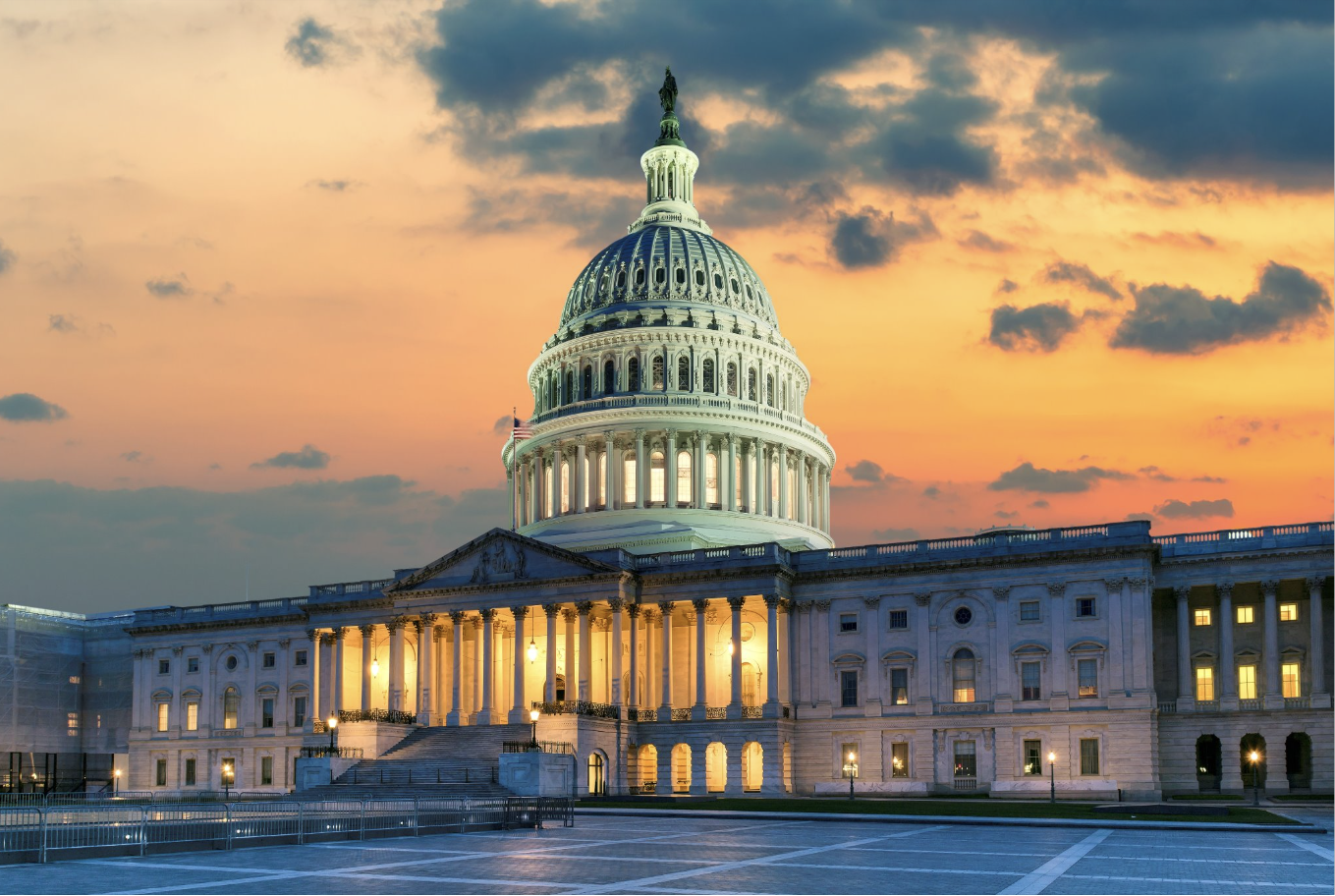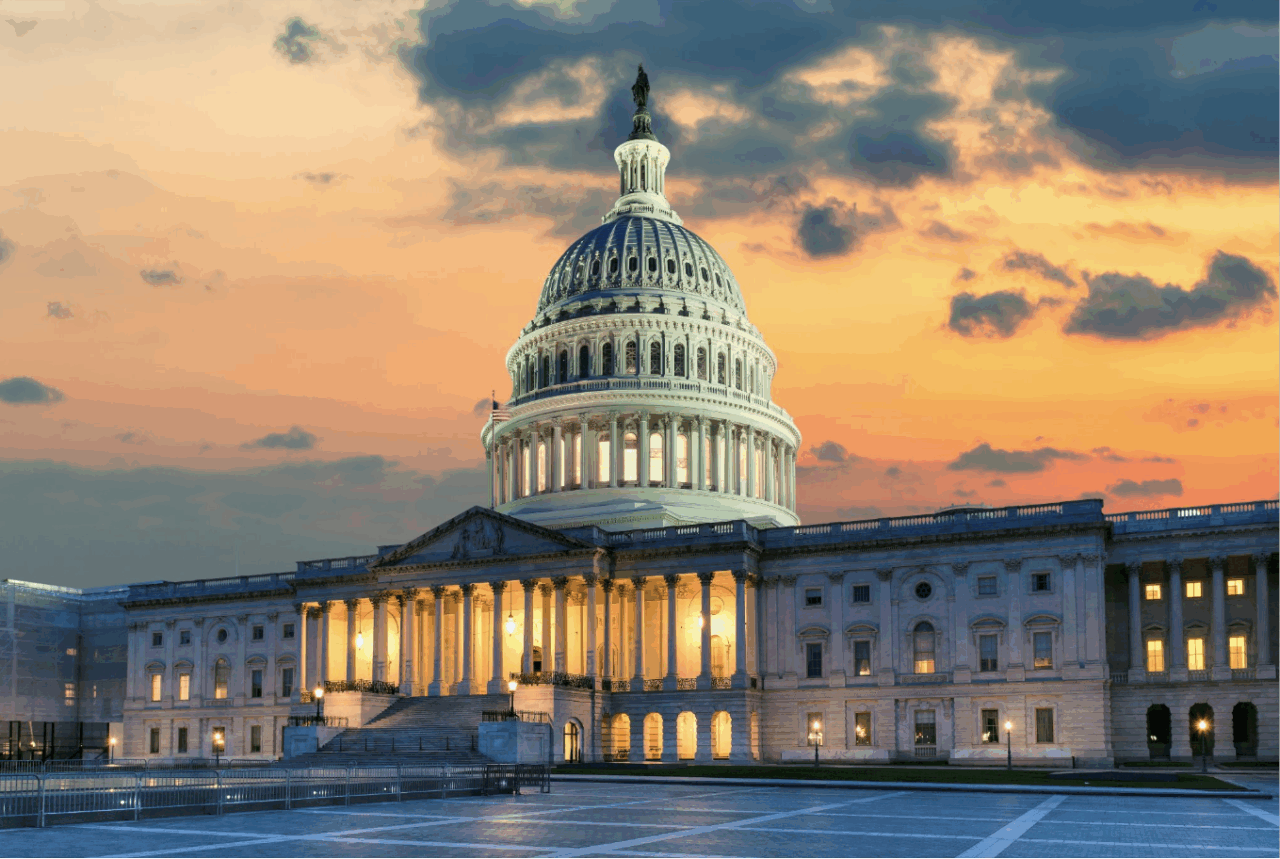Poll: Government Shutdown
BIG TAKEAWAYS:
- Americans now blame Trump and Republicans for the shutdown by 14 points, up from 10 points last week.
- Trump reaches his lowest economic approval in Navigator tracking since 2018.
- As SNAP benefits come under threat, Americans look to Trump and Republicans to come to the table to negotiate an end to the shutdown.
Shutdown News
The government shutdown is still top of mind for Americans. Three quarters of respondents are hearing at least some news about the government shutdown, similar to 75 percent from our tracking last week. Awareness is slightly lower among independents at 62 percent. This week’s tracking finds a 9-point uptick in awareness among passive news consumers, 66 percent of whom have now heard a lot or some about shutdown.
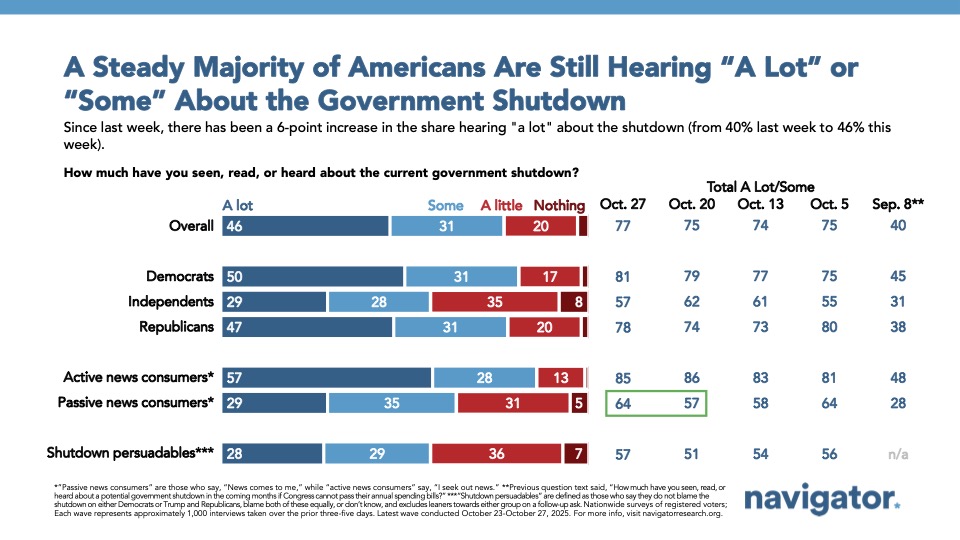
64 percent believe the shutdown will have a negative impact on them personally, up from half who thought the same last week. Even more (77 percent) believe it will have a negative impact on the country.
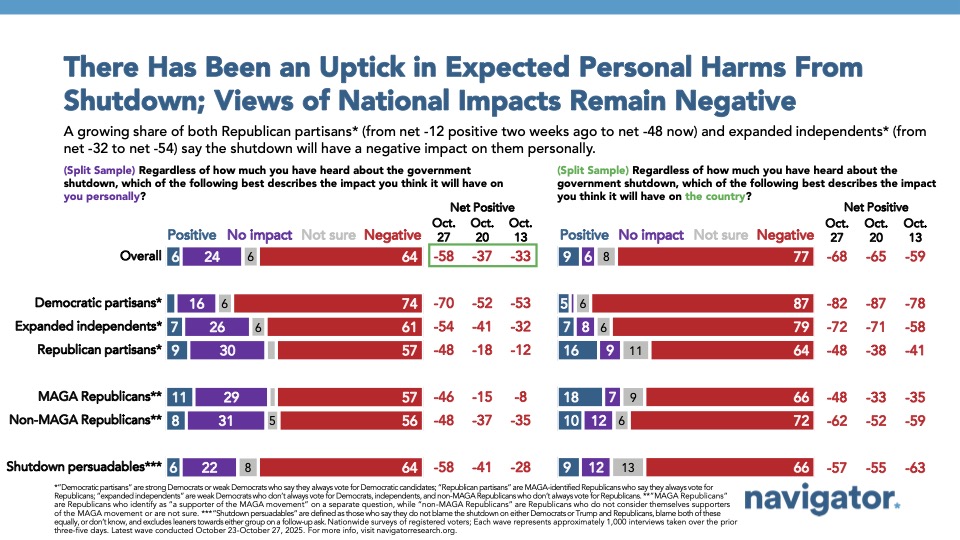
By a 14-point margin (47 percent – 33 percent), Americans blame President Donald Trump and Republicans in Congress for the government shutdown, up 4 points from our tracking last week. Independents blame Trump and Republicans over congressional Democrats by 23 points (13 percent – 36 percent), however a plurality continue to blame both parties (43 percent).
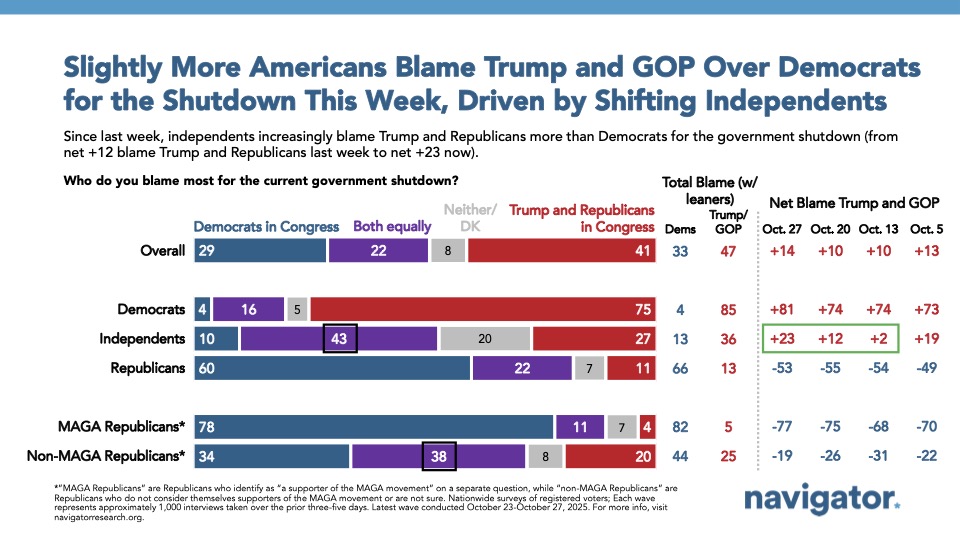
A plurality believe Trump and Republicans in Congress have the power to end the shutdown over Democrats in Congress, though a third say both have equal power to end it. When forced to choose between Trump and Republicans or Democrats, a majority say Trump and Republicans have the power to end it (52 percent – 21 percent) showing no change week over week.
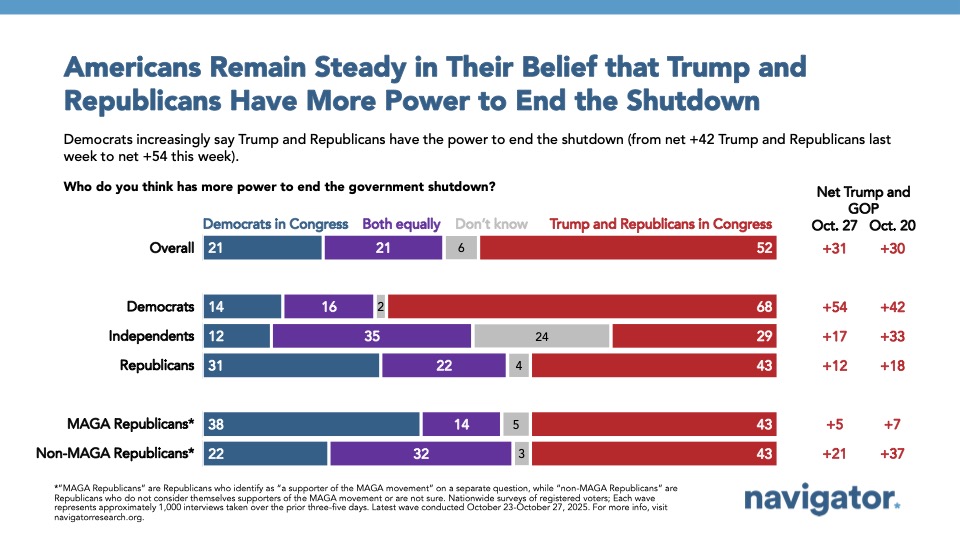
Americans see Trump and Republicans as trying to keep the government shut down. By 9 points, Americans say Republicans in Congress have tried to shut the government down, and they blame Trump by 11 points. Americans are split on whether Democrats are trying to keep the government open (44 percent open – 44 percent shut), but still give them more credit than Trump and Republicans for trying to keep the government open.
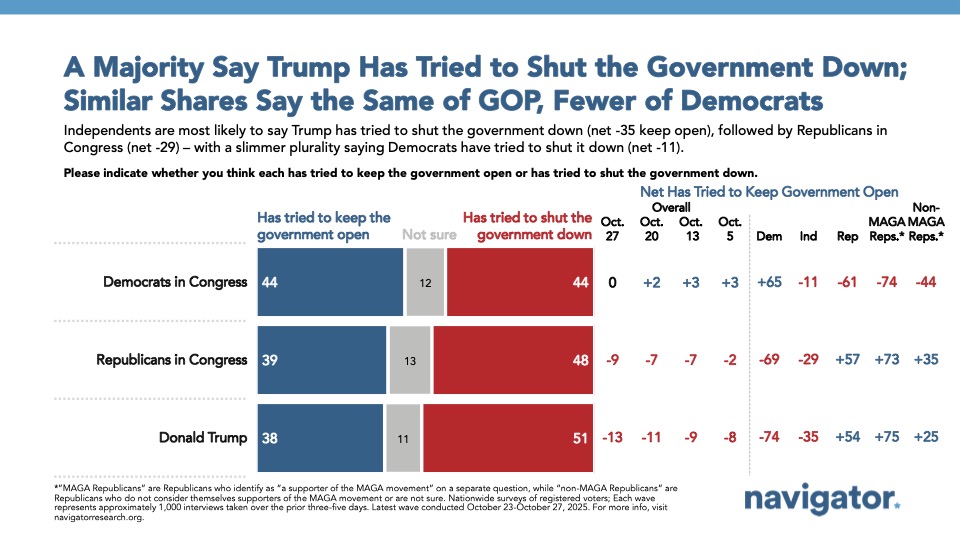
Impressions of what Democrats are fighting for in the shutdown remain mixed, while Trump and Republicans are underwater on the same metric. 42 percent have a positive impression of what Democrats in Congress are fighting for, and among those with a positive impression, health care is cited as the top positive aspect of the Democrats’ fight in the shutdown.
Republicans in Congress, however, fare much worse on this question (-14 points underwater), doubling their negative margin on what they’re fighting for in this shutdown from last week (-7 points). Similarly to the positive sentiment for Democrats, negative sentiment for Republicans is driven by concerns over health care. Donald Trump, however, has remained stable week over week in the amount of Americans who have a negative impression of what he’s fighting for in the shutdown.
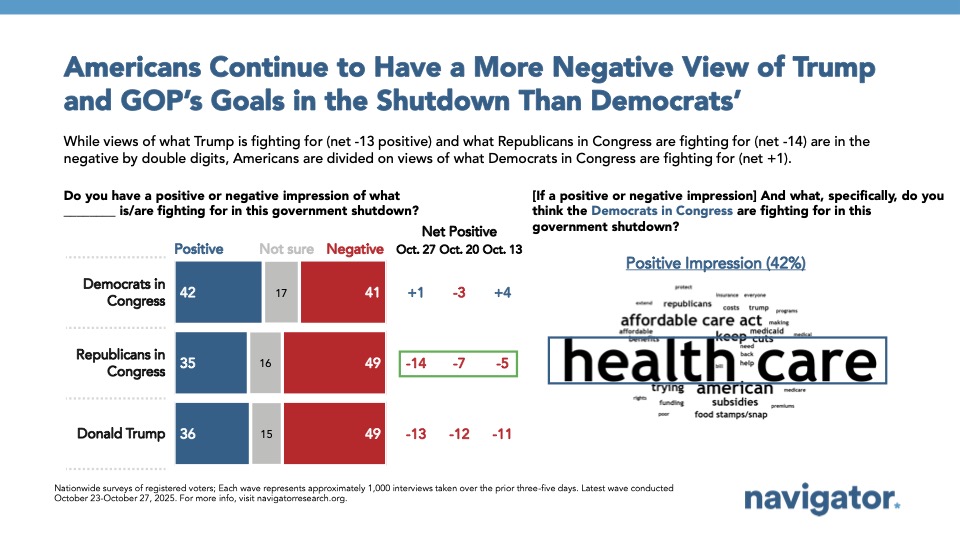
Americans have only grown in their desire for Republicans to compromise with Democrats. By 39 points (64 percent – 25 percent), Americans say Trump and Republicans should compromise with Democrats in Congress, up 9 points from last week. In contrast, Americans say Democrats should compromise with Trump and Republicans by just 6 points.
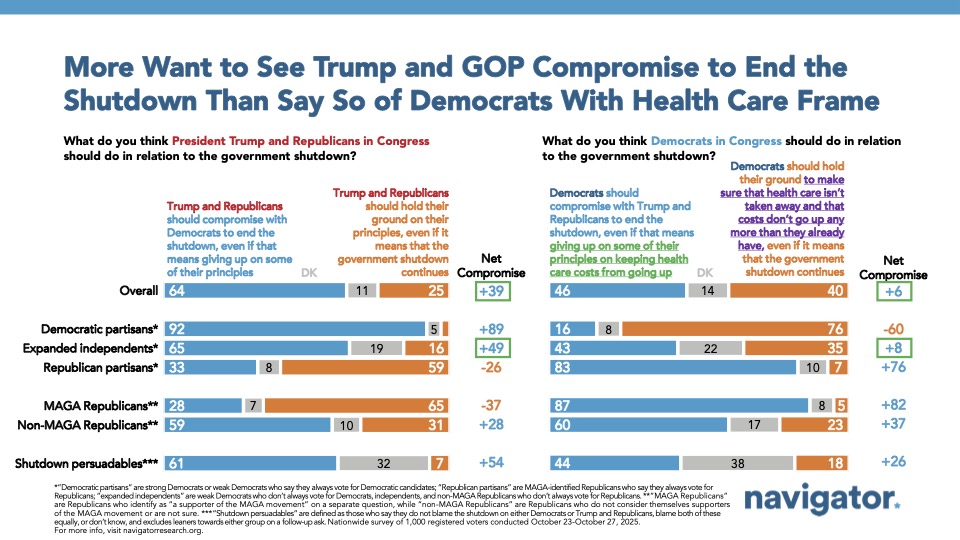
More believe Democrats in Congress are focused on the right things by 8 points (50 percent right things – 42 percent wrong things), while Republicans in Congress are underwater on the same measure by 6 points, doubling last week’s margin (44 percent right things – 50 percent wrong things). A plurality of independents continue to think both Democrats and Republicans are focused on the wrong things.
Shutdown Stagnation, Health Care Costs, and Food Assistance Rise to Top Concerns
While health care costs remain a top concern for Americans, SNAP funding and the shutdown itself are equally concerning. Most Americans say they have heard “a lot” (42 percent) or “some” (30 percent) about SNAP running out of funds on November 1st if the shutdown continues. Blame for SNAP running out of funds similarly falls on Trump and Republicans in Congress by a 21-point margin.
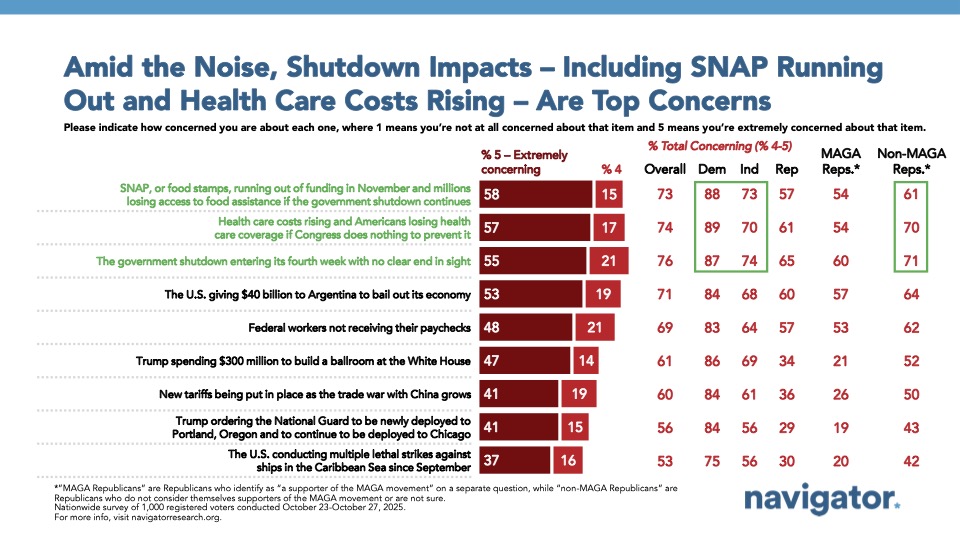
When looking just at top concerns on consequences of the shutdown alone, health insurance costs doubling for Americans is tied with an indefinite shutdown for the top concerns, with 80 percent of Americans being extremely or somewhat concerned. The third-highest concern is millions of children and pregnant women losing access to healthy food, at 79 percent.
Trump hits bottom
As the shutdown continues, President Trump’s overall approval rating (-16) and economic job approval (-21) remain underwater, the lowest point both of these metrics have been since the beginning of our shutdown tracking.
While Trump has experienced low job approval ratings in the past, this is the lowest economic rating in Navigator tracking since 2018. These low numbers surpass his previous lowest economic ratings in April, following the administration’s so-called Liberation Day, when his rating was -16.
Disapproval remained identical among Democrats but has grown among both independents (from -31 to -51) and Republicans (from +61 to +52).
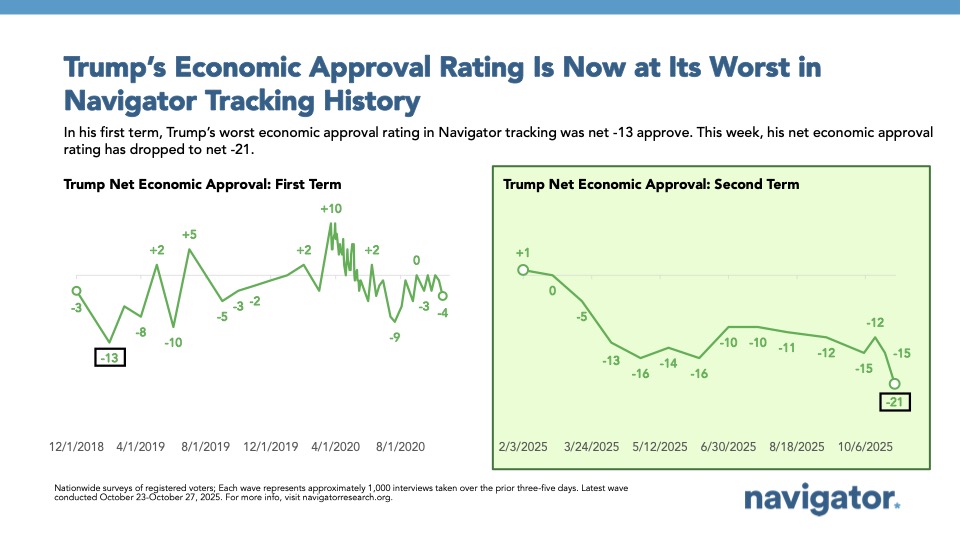
About The Study
Global Strategy Group conducted a public opinion survey among a sample of 1,000 registered voters from October 23-October 27, 2025. The survey was conducted online, recruiting respondents from an opt-in online panel vendor. Respondents were verified against a voter file and special care was taken to ensure the demographic composition of our sample matched that of the national registered voter population across a variety of demographic variables. The margin of error for the full sample at the 95 percent level of confidence is +/- 3.1 percentage points. The margin of error for subgroups varies and is higher.
